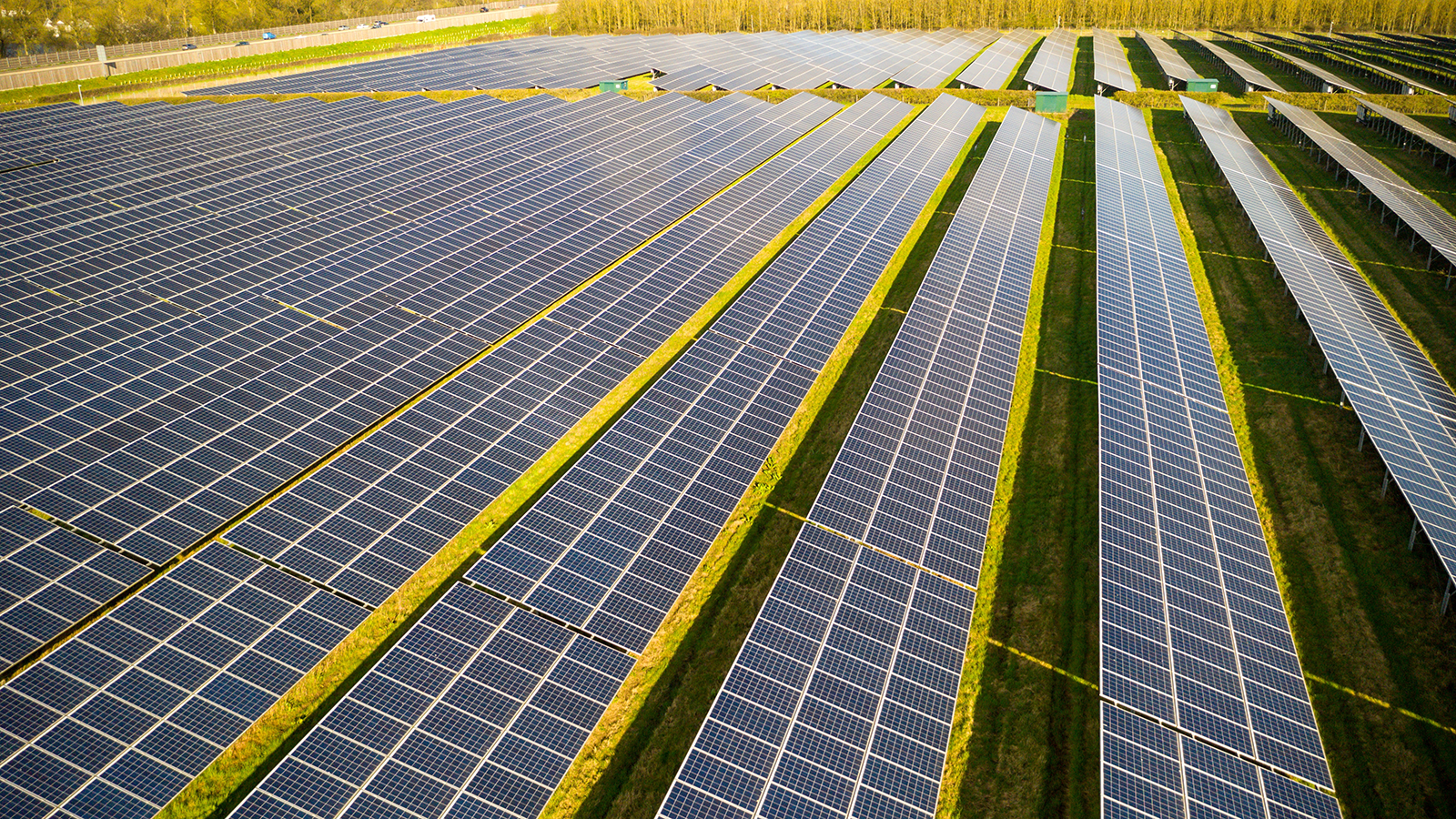
Tanya Weaver Fri 28 Feb 2025
Collected at: https://eandt.theiet.org/2025/02/28/adding-solar-panels-farmland-can-boost-both-energy-and-food-security-finds-new-study
A study by the University of Sheffield has found that installing solar panels on farmers’ land would not result in a loss of agricultural activity.
As part of its plan for the UK to reach net zero by 2050, the government aims to significantly ramp up the amount of solar power across the country.
However, the prospect of swathes of ground-mounted solar panels has proven contentious with both farmers and the public.
Chief among the criticisms is that high-quality agricultural land will have to give way to solar farms. Some also do not like the visual impact these farms have on the landscape.
A study by researchers at the University of Sheffield focuses on the impact of agrivoltaics in Great Britain. Agrivoltaics is the dual use of land for solar energy production and agriculture.
The study has found that the deployment of agrivoltaics – which would see solar panels installed in ways to allow for farming activities underneath or between panels – could enable the simultaneous production of crops, livestock and renewable energy.
Agrivoltaics has such high coverage potential that it could meet UK government photovoltaic targets on its own while avoiding land use conflicts, according to the researchers.
Professor Sue Hartley, vice president for research and innovation at the University of Sheffield, who co-authored the study, said: “The government and solar developers have ambitious plans for the expansion of solar farms, but these risk the loss of agricultural land needed for food production at a time when global food security is threatened by geopolitical uncertainty and climate change.
“Agrivoltaic technology is a potential way out of this dilemma. It allows us to use the same area of land for both food and clean energy production, addressing some of the criticism levelled at solar farms.”
The study highlights regions in the UK where agrivoltaics can effectively be deployed, including Cambridgeshire, Essex, Lincolnshire and the broader east and south-east of England.
Several factors contribute to this suitability, including the availability of flat land, the extent of existing agricultural use, grid connectivity and the prevalence of solar radiation.
Hartley said: “Our research identifies the areas in the UK where this technology can be most effectively deployed, both to mitigate land use conflicts and deliver the UK’s energy needs.”
A research project led by the University of Sheffield previously saw agrivoltaic systems installed on farmland in Tanzania and Kenya. The results concluded that not only did the technology produce low-carbon electricity, it was found to significantly boost crop yields and conserve water in regions that are acutely vulnerable to the impacts of climate change.
Researchers found that certain crops, such as maize, Swiss chard and beans, thrived under the partial shade provided by solar panels.
The shade offered further benefits: it reduced water evaporation for more efficient water use and the panels themselves provided rainwater to supplement irrigation needs.
The researchers hope that this study, published in ScienceDirect, will help inform land use policy debates by promoting multifunctional land use and encouraging more research to support and guide the development of domestic agrivoltaics.
Dr Richard Randle-Boggis, co-author and research scientist at the European research organisation SINTEF, said: “Our next step should be field experiments to test the performance of the systems, investigate different designs with different crops and better understand the perspectives of local communities and other stakeholders.
“The loss of farmland is typically a major reason communities oppose solar park development in their local areas. Our research takes a leading step in demonstrating where solar parks could be developed alongside agricultural activities so that farmland is not lost.”

Leave a Reply